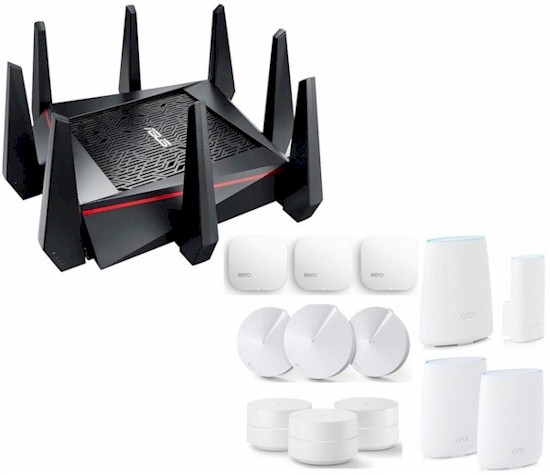someuser08
Occasional Visitor
I've been running 2 ax92 in AiMesh for while now connected via 5-2 AX backhaul between 3 floors (nodes at ground and 2nd floor). This gave me maximum 270mbps connectivity (to the internet) from top floor with a signal strength of approximately -80 and usage of 160Mhz band. I think its actually not too bad speed considering the signal drop (I have foil based insulation in the floors, so that's why it drops a lot), but since my internet is now capable of 500mbps I thought I would get a third node to stick in between.
The results are rather disappointing. I daisy chained them floor by floor and even though the signals are excellent now (-59 and -50) I only get 360mbps from top floor. I'm testing using only wired connections and from the first floor I now get full 500mbps, which means the first hop is working perfectly. The signal for the second hop is even better that the first, but am I expecting too much from a daisy chain at these speeds? Considering 360mpbs is maximum I get when routers are in the middle of the room unobstructed and if I hide them out of sight it goes down to 310-320 which is really not worth it for the third router.
P.S. There are also seem bugs in the latest Asus firmware - if a middle node of a daisy chain powered off, it won't came back in the middle until you pin uplink for the third node back to it. And optimization of the network does nothing to create a daisy chain even though the signals between the nodes are very different.
The results are rather disappointing. I daisy chained them floor by floor and even though the signals are excellent now (-59 and -50) I only get 360mbps from top floor. I'm testing using only wired connections and from the first floor I now get full 500mbps, which means the first hop is working perfectly. The signal for the second hop is even better that the first, but am I expecting too much from a daisy chain at these speeds? Considering 360mpbs is maximum I get when routers are in the middle of the room unobstructed and if I hide them out of sight it goes down to 310-320 which is really not worth it for the third router.
P.S. There are also seem bugs in the latest Asus firmware - if a middle node of a daisy chain powered off, it won't came back in the middle until you pin uplink for the third node back to it. And optimization of the network does nothing to create a daisy chain even though the signals between the nodes are very different.



